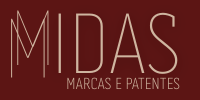Introduction
When registering a trademark, businesses must choose the type of protection that best suits their brand identity. In Brazil, trademarks are classified into three main categories: wordmarks (marca nominativa), figurative marks (marca figurativa), and combined marks (marca mista).
Understanding the differences between these trademark types is essential for ensuring strong legal protection, brand exclusivity, and market differentiation.
This article explains what wordmarks, figurative marks, and combined marks are, their advantages, and how businesses can choose the best option for their brand registration.
Why is Trademark Registration Important?
A registered trademark provides businesses with exclusive rights to use their brand name, logo, or symbol within a specific industry. Some key benefits include:
- Legal Protection: Prevents competitors from using a similar brand name or logo.
- Brand Recognition: Strengthens a business’s identity in the market.
- Exclusive Rights: Allows full control over how the brand is used.
- Increased Business Value: A trademark can be licensed, franchised, or sold.
Selecting the right trademark type is crucial for maximizing brand protection.
1. What is a Wordmark (Marca Nominativa)?
A wordmark is a trademark consisting only of words, letters, or numbers, without any graphical elements, colors, or stylization.
✅ Examples:
- Nike
- Coca-Cola (as plain text, without the stylized font)
Advantages of Wordmarks:
✔ Broad Protection – The brand name is protected in any font or design. ✔ Flexible Usage – The company can change logo designs without losing trademark rights. ✔ Easier to Defend in Legal Cases – Wordmarks prevent competitors from using similar names.
Best for Businesses That:
✅ Focus on brand recognition through name rather than design. ✅ Want to protect a simple, strong, and distinctive name. ✅ Plan to use different logos or design variations over time.
2. What is a Figurative Mark (Marca Figurativa)?
A figurative mark is a trademark that consists of a graphic element, symbol, or logo without words.
✅ Examples:
- Apple’s apple logo 🍏
- McDonald’s golden arches (M)
- Mercedes-Benz three-point star
Advantages of Figurative Marks:
✔ Visual Brand Recognition – Customers identify the brand through a strong visual identity. ✔ Stronger Aesthetic Protection – Protects specific design elements that make the logo unique. ✔ Effective for Global Branding – Symbols can transcend language barriers.
Best for Businesses That:
✅ Want to build a brand identity around a unique symbol or icon. ✅ Have a highly recognizable visual logo. ✅ Expand internationally where logos are more recognizable than words.
3. What is a Combined Mark (Marca Mista)?
A combined mark (also called a mixed mark) is a trademark that includes both words and a graphic/logo.
✅ Examples:
- Starbucks logo with the name ☕
- Burger King logo with text 🍔
- Adidas logo with text 👟
Advantages of Combined Marks:
✔ Stronger Brand Identity – Protects both the name and the visual logo together. ✔ Legal Protection for the Full Brand Representation – Prevents competitors from copying either the name or logo in combination. ✔ Ideal for Businesses with a Unique Logo and Name.
Best for Businesses That:
✅ Want comprehensive brand protection. ✅ Use a logo and text together in marketing. ✅ Need to secure their entire brand image in legal cases.
Wordmark vs. Figurative Mark vs. Combined Mark: Key Differences
| Feature | Wordmark (Nominativa) | Figurative Mark (Figurativa) | Combined Mark (Mista) |
|---|---|---|---|
| Includes Words? | ✅ Yes | ❌ No | ✅ Yes |
| Includes Logo or Symbol? | ❌ No | ✅ Yes | ✅ Yes |
| Protection Scope | Covers the name in all styles | Covers the visual design only | Covers both text and design together |
| Best for Brand Recognition? | Name-based brands | Logo-based brands | Businesses using both |
| Most Flexible for Design Changes? | ✅ Yes | ❌ No | ❌ No |
| Best for Expanding Branding? | ✅ Yes | ✅ Yes | ✅ Yes |
How to Choose the Right Type of Trademark for Your Business
Choosing the right trademark depends on how your brand is represented in marketing and customer perception.
Choose a Wordmark If:
- Your business name is unique and strong enough to stand alone.
- You may change logos in the future but want to keep name protection.
- Your brand name is a key part of marketing strategy.
Choose a Figurative Mark If:
- Your brand is identified mainly by a symbol or image.
- You plan to expand globally, where symbols are more recognizable than text.
- Your business has a unique and iconic logo.
Choose a Combined Mark If:
- Your brand uses both a name and a logo together in all marketing materials.
- You want to protect the full brand identity as one entity.
- Your business has a highly recognizable combination of name and design.
Common Mistakes to Avoid When Registering a Trademark
❌ Skipping a Trademark Search – Always check INPI’s database to ensure the name/logo is available. ❌ Choosing a Generic Name – A trademark must be unique and distinctive. ❌ Not Protecting Visual Identity – If your brand relies on a logo, consider registering a figurative or combined mark. ❌ Ignoring Long-Term Strategy – Think about how your brand may evolve over time.
Conclusion
Understanding the differences between wordmarks, figurative marks, and combined marks is essential for businesses looking to protect their brand effectively.
- Wordmarks protect the name and offer flexibility in design.
- Figurative marks protect logos or symbols, ensuring strong visual recognition.
- Combined marks protect the full brand identity, including both text and design.
By choosing the right trademark type, businesses can enhance brand security, market presence, and legal exclusivity, ensuring long-term success.

